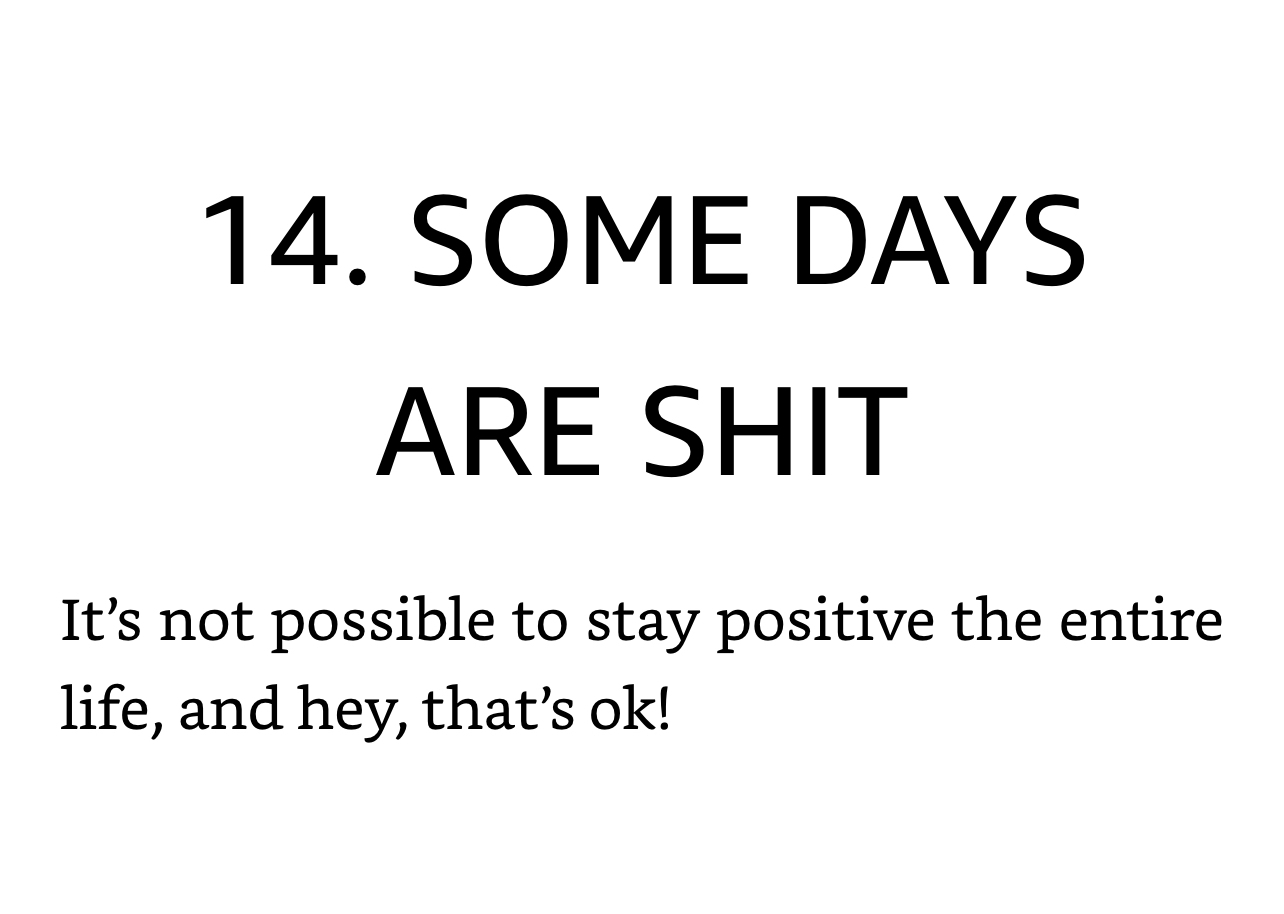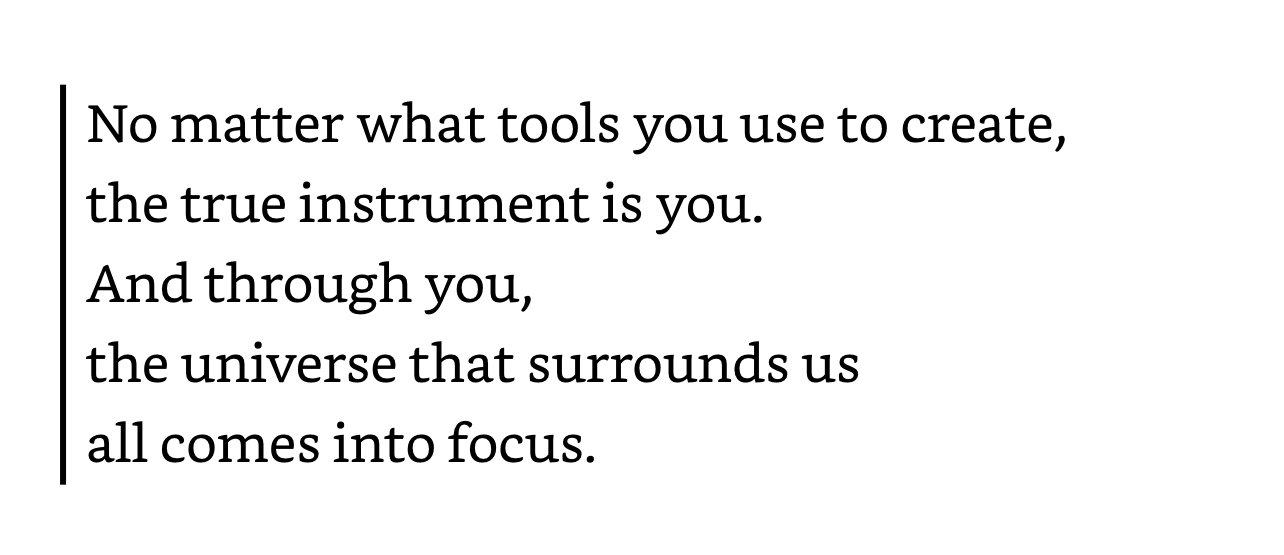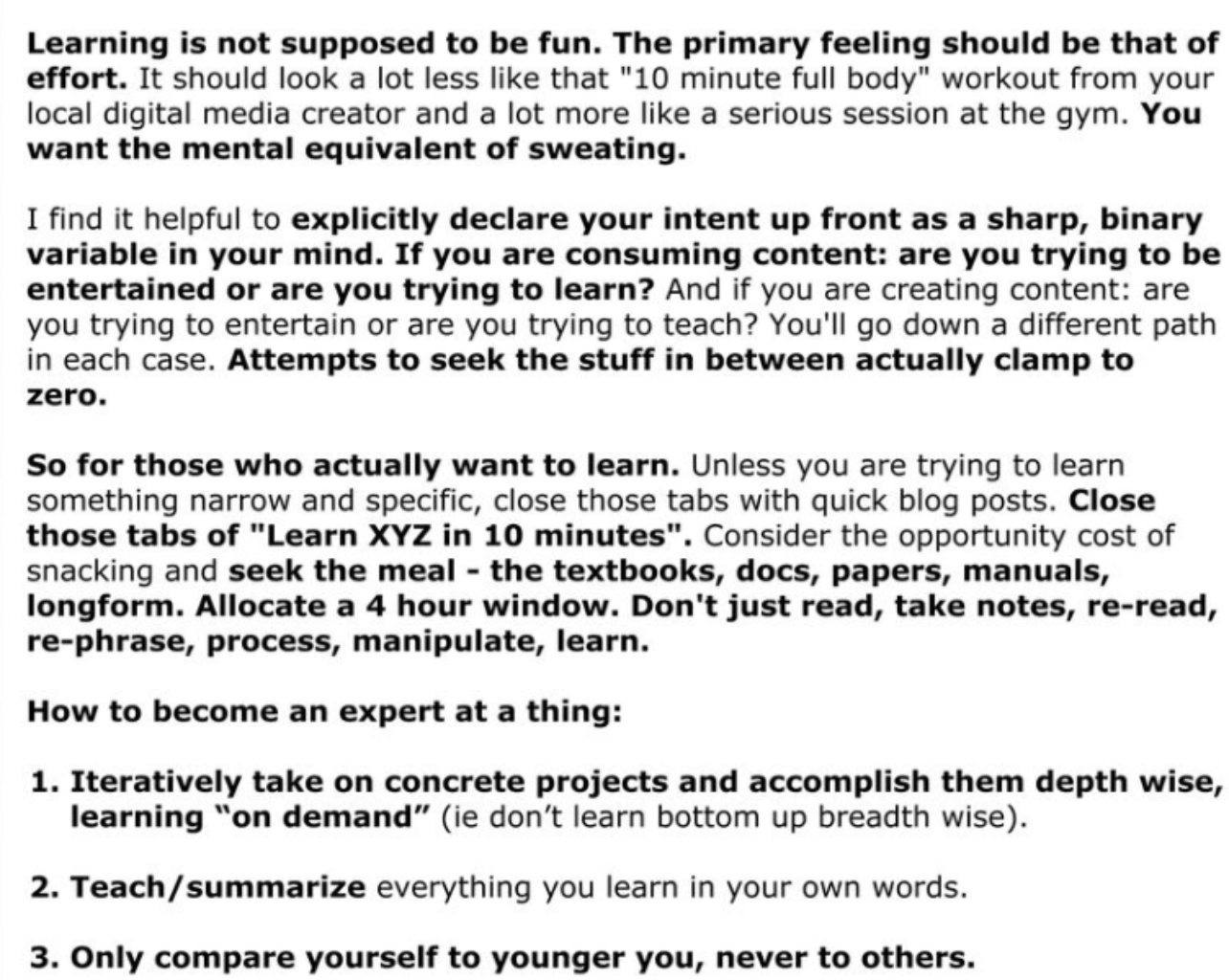“Reinvent yourself”
— 50 Things to Realize Before It’s too late by Manoj Chenthamarakshan a.co/7J4f5xt
“Reinvent yourself”
— 50 Things to Realize Before It’s too late by Manoj Chenthamarakshan a.co/7J4f5xt

“Cherish the kind-hearted people in your life, they will help you through the ups and downs of life.”
— 50 Things to Realize Before It’s too late by Manoj Chenthamarakshan a.co/5IdB54c
““Take care of your body. It’s the only place you have to live.”-Jim Rohn”
— 50 Things to Realize Before It’s too late by Manoj Chenthamarakshan a.co/2exxxsP
““Fear and self doubt have always been the greatest enemies of human potential”-Brian Tracy”
— 50 Things to Realize Before It’s too late by Manoj Chenthamarakshan a.co/7WVwRmv
““Flow is an optimal state of consciousness, a peak state where we both feel and perform our best. We become so involved in an activity that nothing else seems to matter. The ego falls away. Time flies. Every action, movement and thought follows inevitably from the previous one, like playing jazz. Your whole being is involved, and you’re using your skills to the upmost."-Mihaly Csikszentmihalyi”
— 50 Things to Realize Before It’s too late by Manoj Chenthamarakshan a.co/9o9kFMH
““Support your soul to express and experience things in this world, Never be the one who is blocking yourself””
— 50 Things to Realize Before It’s too late by Manoj Chenthamarakshan a.co/bL93GIR
day 0 of 90
ai + bi. artificial intelligence + biological intelligence = ci: Co Intelligence
a+b=c
silence is luxurious
“Action and awareness merge. Your sense of self vanishes. Time passes strangely. And performance—performance just soars.”
— The Art of Impossible: A Peak Performance Primer by Steven Kotler a.co/8cOhO0a
“Flow is defined as “an optimal state of consciousness where we feel our best and perform our best.””
— The Art of Impossible: A Peak Performance Primer by Steven Kotler a.co/8mEk5UY
““personality cluster”—competitiveness, risk tolerance, independent-mindedness”
— On the Edge: The Art of Risking Everything by Nate Silver a.co/bdJvzD6
“Taking a wrong turn allows you to see landscapes you wouldn’t otherwise have seen.”
— The Creative Act: A Way of Being by Rick Rubin a.co/3TdCiJS

“But in most real-life scenarios, we’re interacting with 8 billion other people; their choices affect ours, and ours affect theirs.”
— On the Edge: The Art of Risking Everything by Nate Silver a.co/e5L3NOy
“Game theory is the mathematical study of the strategic behavior of two or more agents (“ players”) in situations where their actions dynamically impact one another. It seeks to predict the outcome of those interactions, and to model what strategy each player should employ, to maximize their expected value while accounting for the actions of the other players.”
— On the Edge: The Art of Risking Everything by Nate Silver a.co/fgnhtQe
““Chess is not a game. Chess is a well-defined form of computation. You may not be able to work out the answers, but in theory there must be a solution, a right procedure in any position. Now real games,” he said, “are not like that at all. Real life is not like that. Real life consists of bluffing, of little tactics of deception, of asking yourself what is the other man going to […] do. And that is what games are about in my theory.””
— On the Edge: The Art of Risking Everything by Nate Silver a.co/2f2GJgE

What data can I use to make my clone? We accept data of essentially every form. Files (PDF, txt, mp3, mp4), books, websites, blogs, YouTube videos, podcasts, manual question answer, Slack, Google Drive, Notion, Dropbox, and email. Read more about Clone Creation